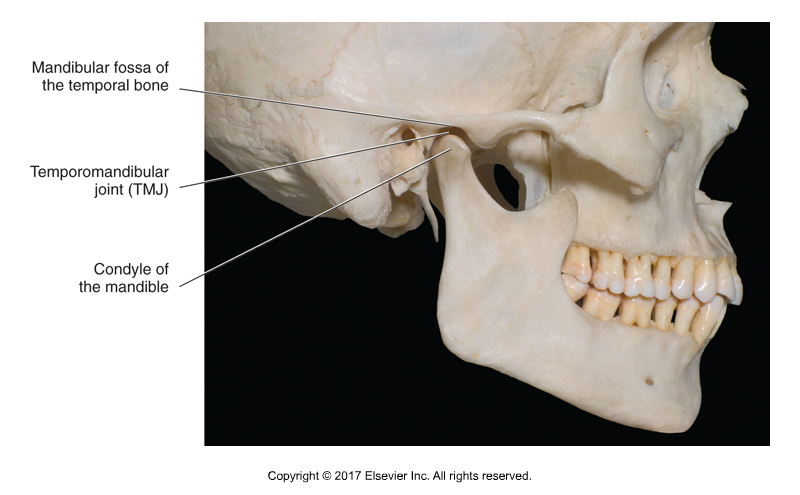Temporomandibular Joint (TMJ) Disorder and Migraine
 A study from Brazil finds that the more frequent that someone experiences migraine attacks, the more likely that the person will have temporomandibular joint (TMJ) disorder. The results were published in the Journal of Manipulative and Physiological Therapeutics.
A study from Brazil finds that the more frequent that someone experiences migraine attacks, the more likely that the person will have temporomandibular joint (TMJ) disorder. The results were published in the Journal of Manipulative and Physiological Therapeutics.
The TMJ
The temporomandibular joint (TMJ) acts like a sliding hinge connecting the jawbone to the skull (mandible to the temporal bone, hence the name “temporomandibular” joint); and TMJ disorder symptoms include difficulty and pain when chewing, as well as joint tension. Previous studies indicated that migraine is related to TMJ disorder. This research further considered the frequency of migraine attacks and its connection with TMJ disorder.
Study
Thirty-one women with episodic migraines (mean age: 33 years), 21 with chronic migraines (mean age: 35 years) and 32 healthy controls (mean age: 31 years) were included in the study. The severity of TMJ disorder was assessed using an index called the Fonseca Anamnestic Index, which ranged from no TMJ disorder (0-19 points) to severe TMJ disorder (70-100 points).

The temporomandibular joint (TMJ).
Permission Joseph E. Muscolino. Kinesiology – The Skeletal System and Muscle Function, 3ed (Elsevier, 2017).
Results
The results showed that women with chronic and episodic migraines were more likely to exhibit TMJ disorder signs and symptoms than healthy controls. Signs and symptoms of TMJ disorder were observed in 54% of the control participants without migraine, 80% of participants with episodic migraine, and 100% of those with chronic migraine.
The lead author Lidiane Florencio wrote regarding the link between TMJ disorder (“TMD”) and migraines: “The repetition of migraine attacks may increase sensitivity to pain. Our hypothesis is that migraine acts as a factor that predisposes patients to TMD. On the other hand, TMD can be considered a potential perpetuating factor for migraine because it acts as a constant nociceptive input that contributes to maintaining central sensitization and abnormal pain processes. Nociceptive pain is caused by a painful stimulus on special nerve endings called nociceptors.”
Migraine
Migraine and TMJ disorder have very similar pathologic mechanisms. Migraine affects 15% of the general population, and progression to the chronic form is expected in about 2.5% of migraine sufferers. On the other hand, TMJ disorder is stress-related as much as it has to do with muscle overload. Patients display joint symptoms – such as joint pain, reduced jaw movement, clicking or popping (crepitus) of the temporomandibular joint – but also develop a muscular condition, including muscle pain and fatigue, and/or radiating face and neck pain.
TMJ disorder and migraine often co-occur. However, while people who suffer from migraine are more likely to have TMJ disorder, people with TMJ disorder will not necessarily have migraine. The researchers believe that TMJ disorder may increase the frequency and severity of migraine attacks, even though it does not necessarily directly precipitate the migraine attack.
The author stated: “Migraine is a neurological disease with multifactorial causes, whereas TMJ disorder, like cervicalgia — neck pain — and other musculoskeletal disorders, is a series of factors that intensify the sensitivity of migraine sufferers. Having TMJ disorder may worsen one’s migraine attacks in terms of both severity and frequency.”
Conclusion
The authors suggest that an examination of TMJ disorder signs and symptoms should be clinically conducted in patients with migraine.
This blog post article was created in collaboration with www.terrarosa.com.au.
(Click here for the blog post article: Tension Headaches.)


